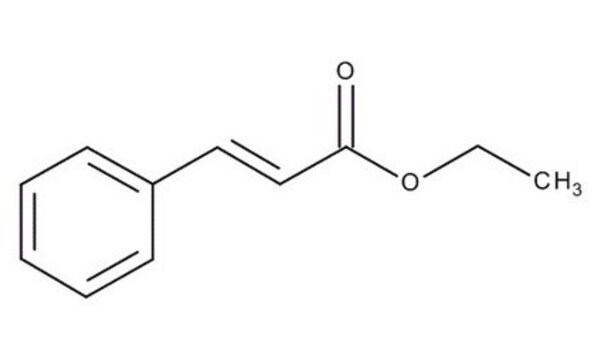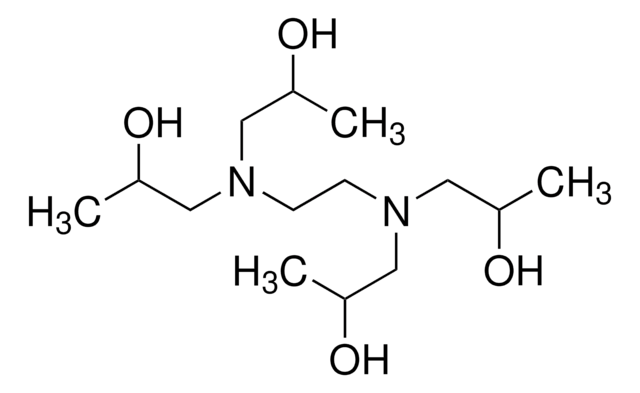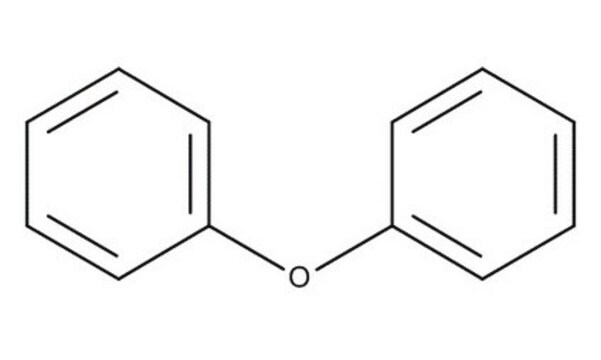33630
Dibenzyl ether
purum, ≥98.0% (GC)
Synonyme(s) :
Benzyl ether
About This Item
Produits recommandés
Qualité
purum
Niveau de qualité
Pureté
≥98.0% (GC)
Forme
liquid
Indice de réfraction
n20/D 1.562
Point d'ébullition
158-160 °C/10 mmHg (lit.)
Pf
1.5-3.5 °C (lit.)
Densité
1.043 g/mL at 20 °C (lit.)
Groupe fonctionnel
ether
Chaîne SMILES
C(OCc1ccccc1)c2ccccc2
InChI
1S/C14H14O/c1-3-7-13(8-4-1)11-15-12-14-9-5-2-6-10-14/h1-10H,11-12H2
Clé InChI
MHDVGSVTJDSBDK-UHFFFAOYSA-N
Vous recherchez des produits similaires ? Visite Guide de comparaison des produits
Catégories apparentées
Description générale
Application
- Green synthesis route: Research demonstrated a green synthesis route using dibenzyl ether for the formation of benzyl phenyl sulfide, emphasizing environmentally friendly methods in chemical synthesis processes (Wu et al., 2023).
- Nanoparticle synthesis by thermal decomposition: Dibenzyl ether was used in the thermal decomposition process for the synthesis of manganese oxide nanoparticles, showcasing its utility in facilitating controlled chemical reactions (Martinez de la Torre and Bennewitz, 2020).
Mention d'avertissement
Warning
Mentions de danger
Conseils de prudence
Classification des risques
Aquatic Acute 1 - Aquatic Chronic 1 - Skin Sens. 1B
Code de la classe de stockage
10 - Combustible liquids
Classe de danger pour l'eau (WGK)
WGK 2
Point d'éclair (°F)
278.6 °F - Pensky-Martens closed cup
Point d'éclair (°C)
137 °C - Pensky-Martens closed cup
Équipement de protection individuelle
Eyeshields, Gloves, type ABEK (EN14387) respirator filter
Faites votre choix parmi les versions les plus récentes :
Déjà en possession de ce produit ?
Retrouvez la documentation relative aux produits que vous avez récemment achetés dans la Bibliothèque de documents.
Les clients ont également consulté
Notre équipe de scientifiques dispose d'une expérience dans tous les secteurs de la recherche, notamment en sciences de la vie, science des matériaux, synthèse chimique, chromatographie, analyse et dans de nombreux autres domaines..
Contacter notre Service technique













